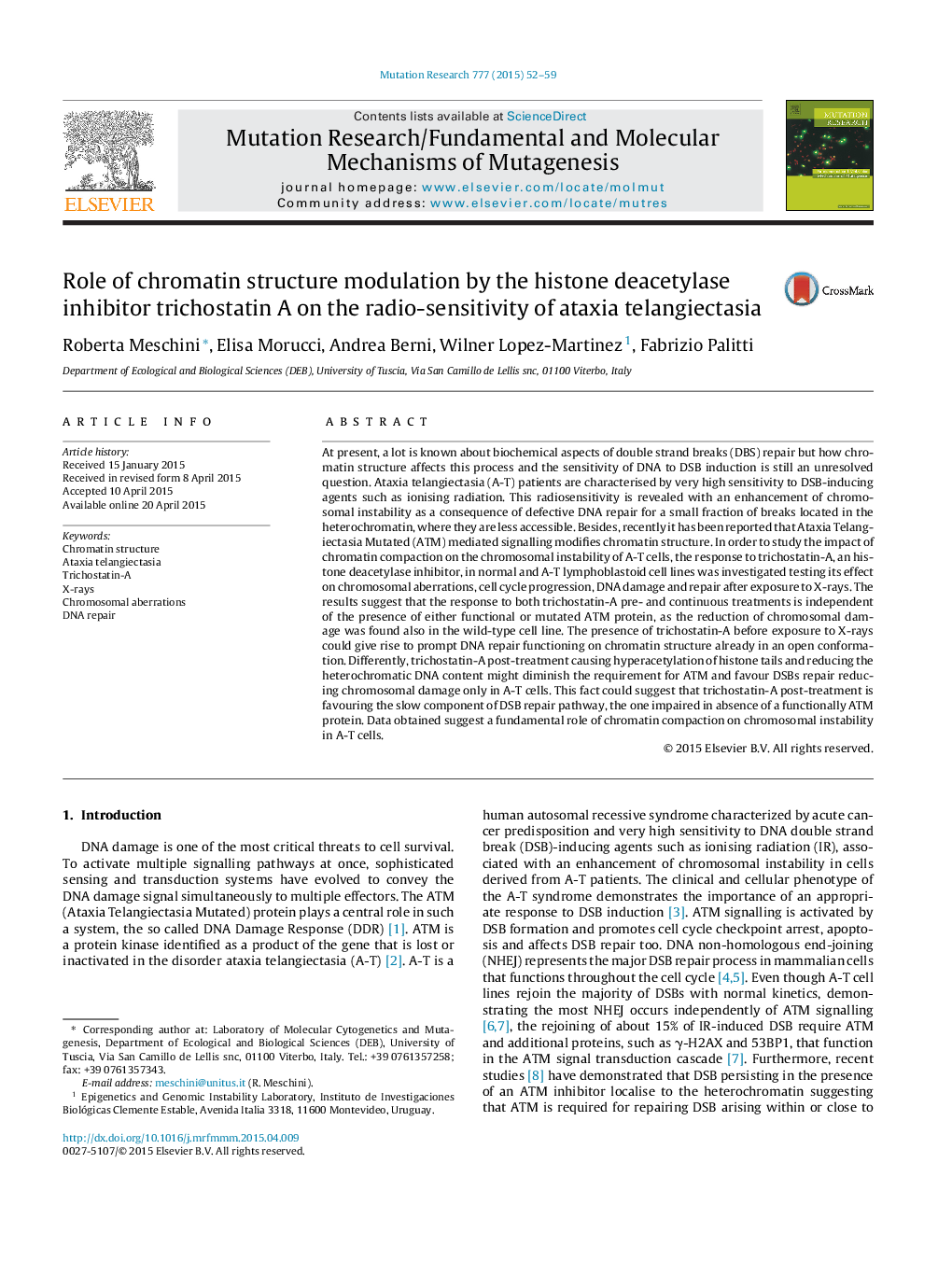| Article ID | Journal | Published Year | Pages | File Type |
|---|---|---|---|---|
| 2146247 | Mutation Research/Fundamental and Molecular Mechanisms of Mutagenesis | 2015 | 8 Pages |
•Role of chromatin compaction on chromosomal instability.•Reduced radiation-induced clastogenicity in Ataxia telangiectasia cell lines.•Histone tails hyperacetylation reduces heterochromatin content favouring DSBs repair.
At present, a lot is known about biochemical aspects of double strand breaks (DBS) repair but how chromatin structure affects this process and the sensitivity of DNA to DSB induction is still an unresolved question. Ataxia telangiectasia (A-T) patients are characterised by very high sensitivity to DSB-inducing agents such as ionising radiation. This radiosensitivity is revealed with an enhancement of chromosomal instability as a consequence of defective DNA repair for a small fraction of breaks located in the heterochromatin, where they are less accessible. Besides, recently it has been reported that Ataxia Telangiectasia Mutated (ATM) mediated signalling modifies chromatin structure. In order to study the impact of chromatin compaction on the chromosomal instability of A-T cells, the response to trichostatin-A, an histone deacetylase inhibitor, in normal and A-T lymphoblastoid cell lines was investigated testing its effect on chromosomal aberrations, cell cycle progression, DNA damage and repair after exposure to X-rays. The results suggest that the response to both trichostatin-A pre- and continuous treatments is independent of the presence of either functional or mutated ATM protein, as the reduction of chromosomal damage was found also in the wild-type cell line. The presence of trichostatin-A before exposure to X-rays could give rise to prompt DNA repair functioning on chromatin structure already in an open conformation. Differently, trichostatin-A post-treatment causing hyperacetylation of histone tails and reducing the heterochromatic DNA content might diminish the requirement for ATM and favour DSBs repair reducing chromosomal damage only in A-T cells. This fact could suggest that trichostatin-A post-treatment is favouring the slow component of DSB repair pathway, the one impaired in absence of a functionally ATM protein. Data obtained suggest a fundamental role of chromatin compaction on chromosomal instability in A-T cells.
